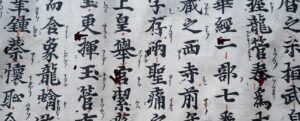The Institute of Koyasan Culture and History is a research institute established at Shōjōshin-in Temple in 2021. It studies the culture and history of Kōyasan and the philosophy of Kōbō-daishi Kūkai, as well as research on Shōjōshin-in Temple’s collection of classical documents and cultural properties. We will continue our efforts to introduce the charms of Kōyasan and Shōjōshin-in Temple to the public in an easy-to-understand way.
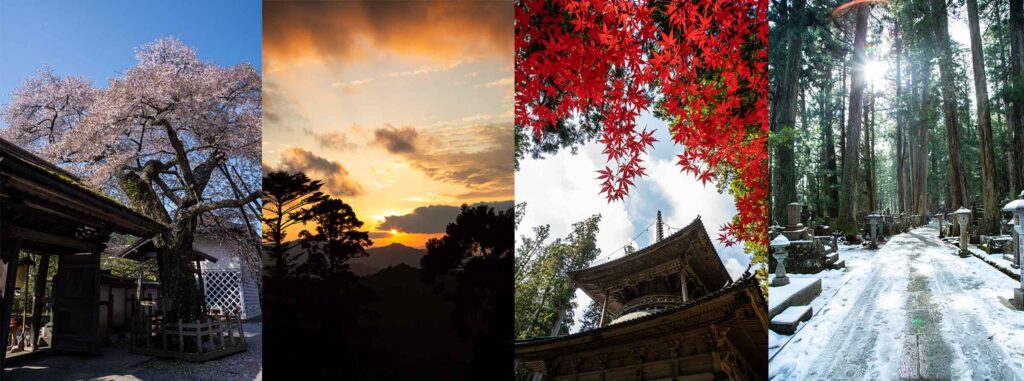
| Theme | Discover and Share |
| Purposes of Establishment | ・Research, Study, and Management of Shōjōshin-in Temple’s Classical Document and Cultural Property Collection ・Research and Study of Koyasan Culture ・Promotion of Shōjōshin-in Temple and Koyasan Culture |
| Activities | 1. Study Sessions by Director Kinoshita and Management and Research at Shōjōshin-in Temple (Twice a Month) 2. Website Management and Operation 3. Regular Lectures (Apr. and Nov.) 4. Koyasan Cooking Study Sessions 5. Publications 6. Academic Presentations |
| Director | Kinoshita Hiroyoshi (Former Section Chief, General Academic Organization,Koyasan University) |
| Advisor | Satō Takahiko (Director, the Research Institute of Esoteric Buddhist Culture,Koyasan University) |
| Members | Hirano Yoshiya (Mayor, Koya Town) Nakamoto Katsuya (President, Nakamoto Meigyokudo) Baba Asami (Managing Director, Ichinohashi Tempu) Matsumura Atsushi (Chief Clerk, Shojoshin-in Temple) |
| Presided by | Shojoshin-in Temple |
| In Cooperation with | The Research Institute of Esoteric Buddhist Culture Koyasan University,Hatsuka Daishi Ko Buddhist Service,Town of Koya |
The Institute of Koyasan Culture and History at Shojoshin-in Temple is a private research institute. We research Shōjōshin-in Temple’s classical document and cultural property collection and study the Kōyasan culture and history, as well as Kōbō Daishi Kyūkai’s philosophy.
As a result, we hope to introduce the charms of Kōyasan and Shōjōshin-in Temple throughout the country and the world. We are confident that our spirit follows the spirit of Mizuhara Gyōei, the predecessor of Shōjōshin-in Temple who was also a great scholar advocating”Kōyasan Studies” in the Taishō era (1912-1926). We hope that you will kindly understand and support the work of this institute.
Kinoshita Hiroyoshi
Director, the Institute of Koyasan Culture and History at Shojoshin-in Temple
【Director’s Profile】
Former Section Chief of the General Academic Organization and Commissioned Researcher of the Research Institute of Esoteric Buddhist Culture at Koyasan University, Councilor of the Association for the Study of Japanese Mountain Religion, Member of the Kudoyama-cho Council for the Protection of Cultural Properties, and Member of the Japan Heritage Nyonin Koya Research Committee. Born in Yanagawa City, Fukuoka Prefecture. Graduated from and employed by Koyasan University in 1983. Studied under Hino Nishishinjo, Professor Emeritus of Koyasan University and grand-disciple of Yanagida Kunio.Specialized in the archaeology of Buddhism and the history of Kōyasan. Published a number of books on Kōyasan history.
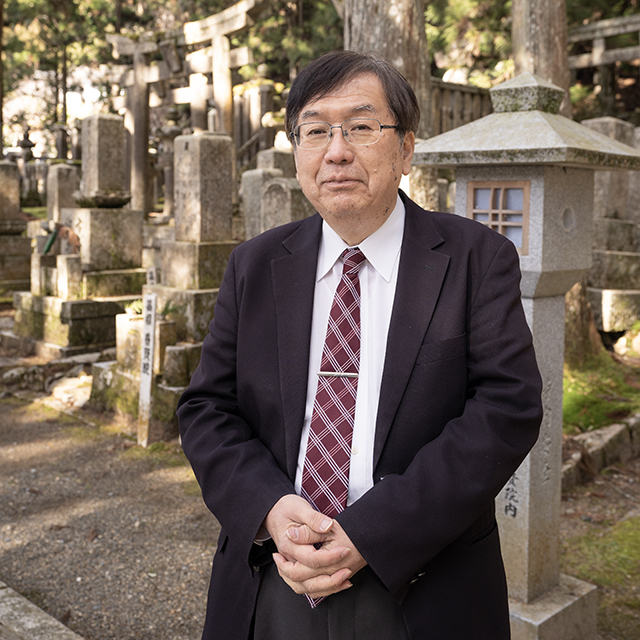
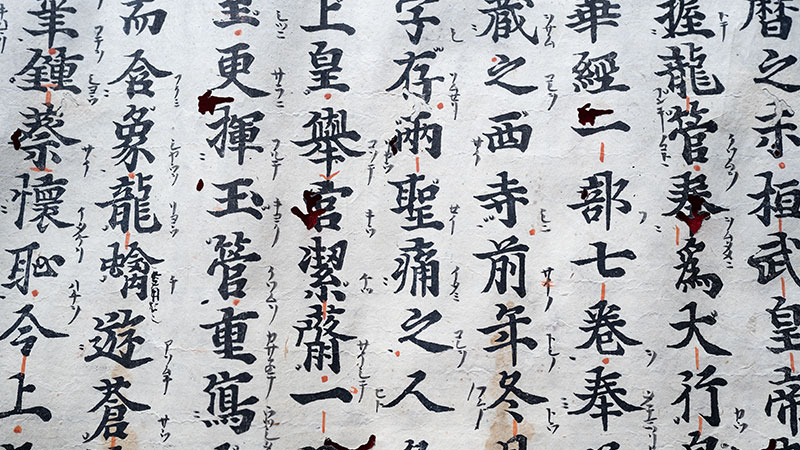
Lectures and Discussions on Koyasan Culture and History
The events organized by the Institute such as lectures, panel discussions, and symposiums are held from time to time so that the study of Kōyasan culture and history can be introduced to everybody in interesting and easy-to-understand ways.
Research and Survey of Cultural Properties and Exhibition of Temple Treasures
The Institute conducts research and study of cultural properties collected by Seishinin-in Temple. We also supervise the temple treasure exhibitions and provide commentaries on the cultural properties, and occasionally plan special exhibitions.
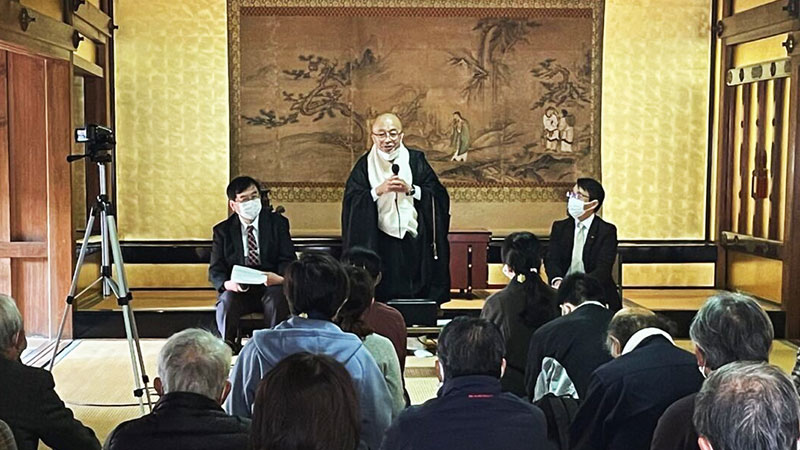
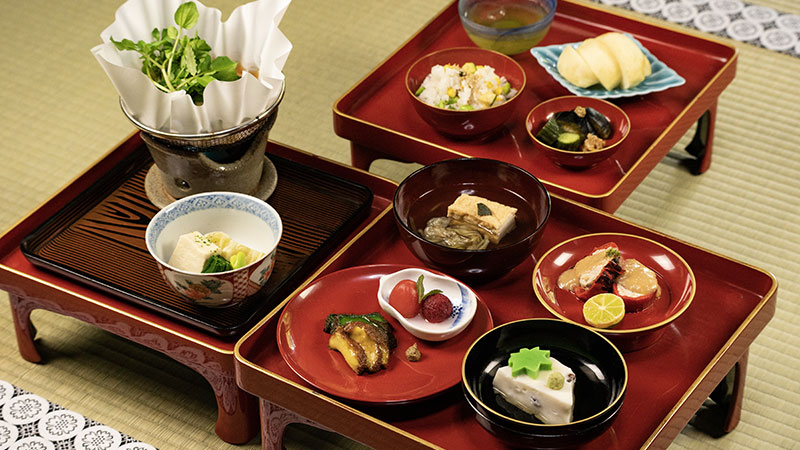
Study of Koyasan Buddhist Vegetarian Cooking Culture and Host of Dining Meetings
We conduct research and study on the history and culture of Buddhist vegetarian cooking in Kōyasan. We also regularly hold dining meetings where new Buddhist vegetarian dishes based on the history of Kōyasan are presented in cooperation with “Aji Kitcho,” a renowned traditional Japanese restaurant in Osaka that has been awarded a Michelin star for many years.
Koyasan Tour Guided by Kinoshita, the Institute Director, Including Okuno-in
Stone Pagoda Tour Director Kinoshita Hiroyoshi, a specialist in the study of stone pagodas including
those in Kōyasan, provides Kōyasan guided tours featuring the stone pagodas at Okuno-in.
The charms of Kōyasan, including his unique expert views, are presented in a way easy to understand even for first-time visitors.
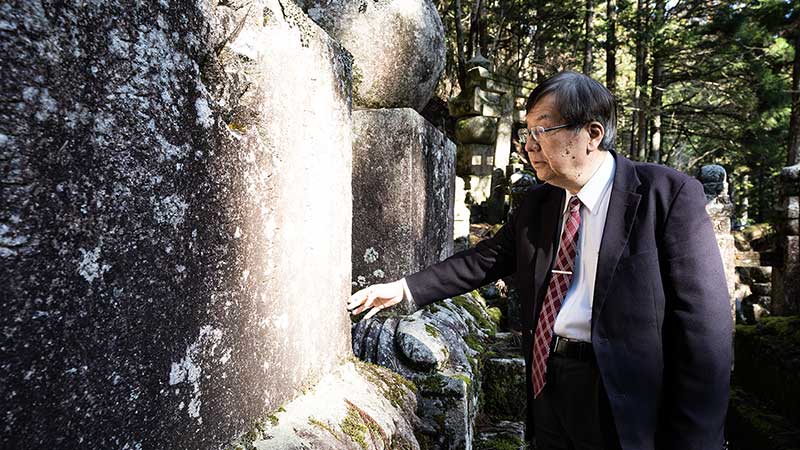
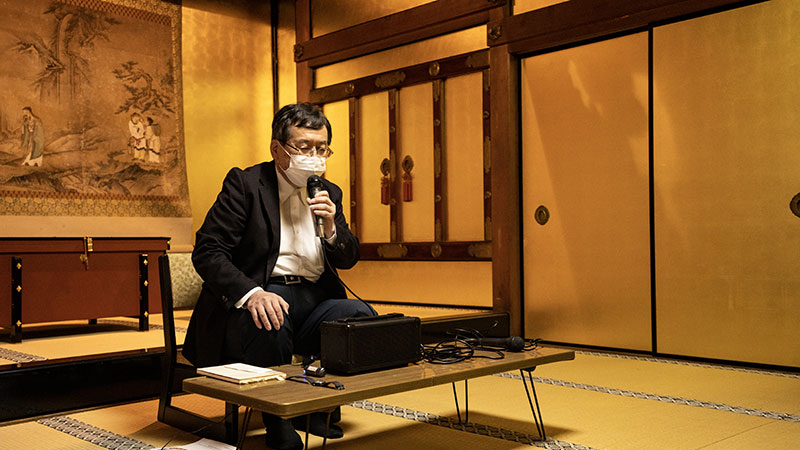
Introductory Lecture on Koyasan
Director Kinoshita Hiroyoshi’s “Interesting History Study Session”, which was held for one year from 2021, has been redesigned to present must-know basic knowledge to enjoy Kōyasan simply and clearly in 30 min. This is a special benefit for guests staying at Shōjōshin-in Temple.
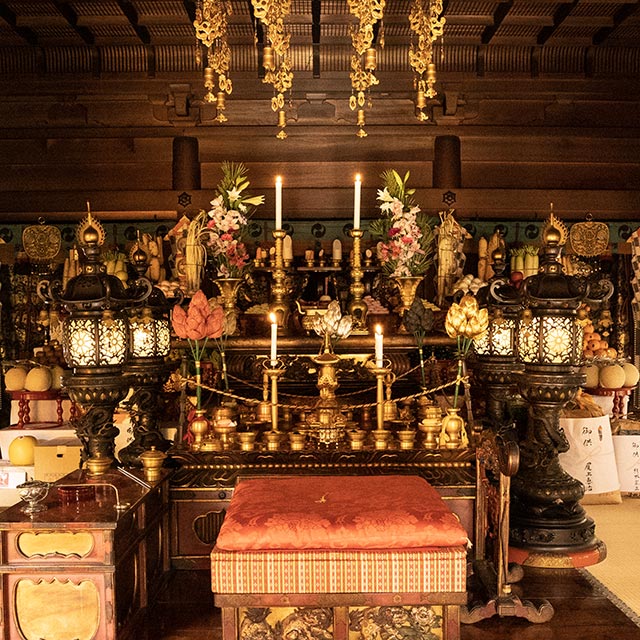
Statue of Principal Image, Hatsuka Daishi
On March 20, 835, the day before Kōbō-daishi Kūkai entered into eternal meditation, he sculpted this wooden statue of himself and inscribed the three
Chinese characters “miunkan” on its back.
This principal image of Shōjōshin-in Temple is currently hidden from the public but can be seen only on the anniversary of the principal image (April 20 in the present calendar). He watches over our faith and wishes for our happiness even now.
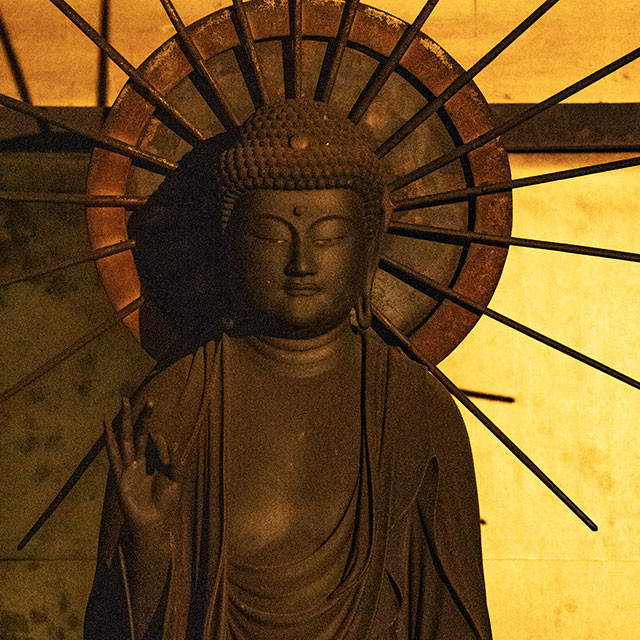
Standing Statue of Amida Nyorai (Important Cultural Property Designated by the Nation)
This 96.6cm high wooden statue, said to have been created by the Buddhist sculptor Unkei, is a slender statue with inlaid crystal eyes and Raigo-in mudra
(reasoning mudra) representing upper grade and lower birth.
This excellent work of the Kamakura period (1185-1333) with gold paint and thinly cut gold leaf decoration is well preserved. It was designated as a former national
treasure on December 28, 1897.

Mausoleum of Uesugi Kenshin (Important Cultural Property Designated by the Nation)
This mausoleum in a hip-and-gable roof style with Japanese cypress bark roof,houses the stone memorial tablets of Uesugi Kenshin and Kagakatsu. A traditional Japanese-style porch is built on the front side only. The interior and exterior are decorated in color.
It was built in the early Edo period (1603-1680),originally consisted of two buildings, the mausolea of Uesugi Kenshin and Kagekatsu and designated as an important cultural property on May 29, 1965.
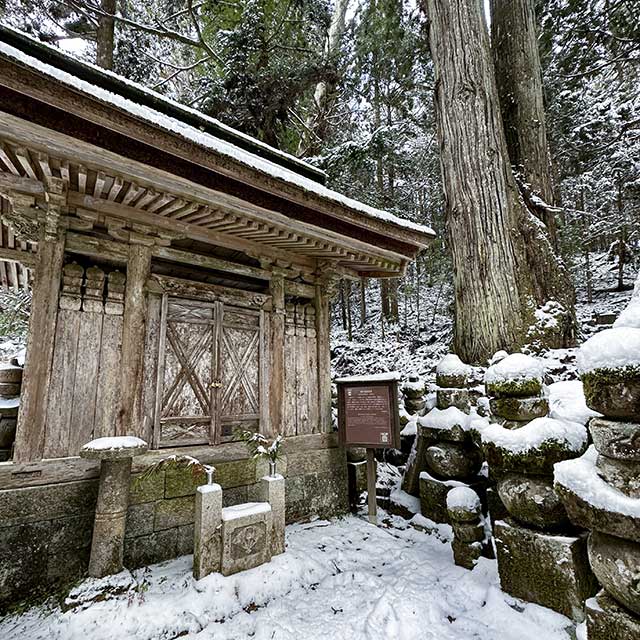
Mausoleum of Satake Yoshishige
The mausoleum of Satake Yoshishige, a Warring States warlord. The inscriptions on the pillars on both sides indicate that Yoshishige built this after holding his own funeral while still alive.
This is valuable architecture with the figures of gorintō, five-tiered stone pagodas,carved on the wall and the remains of coloring on the entire surface.


